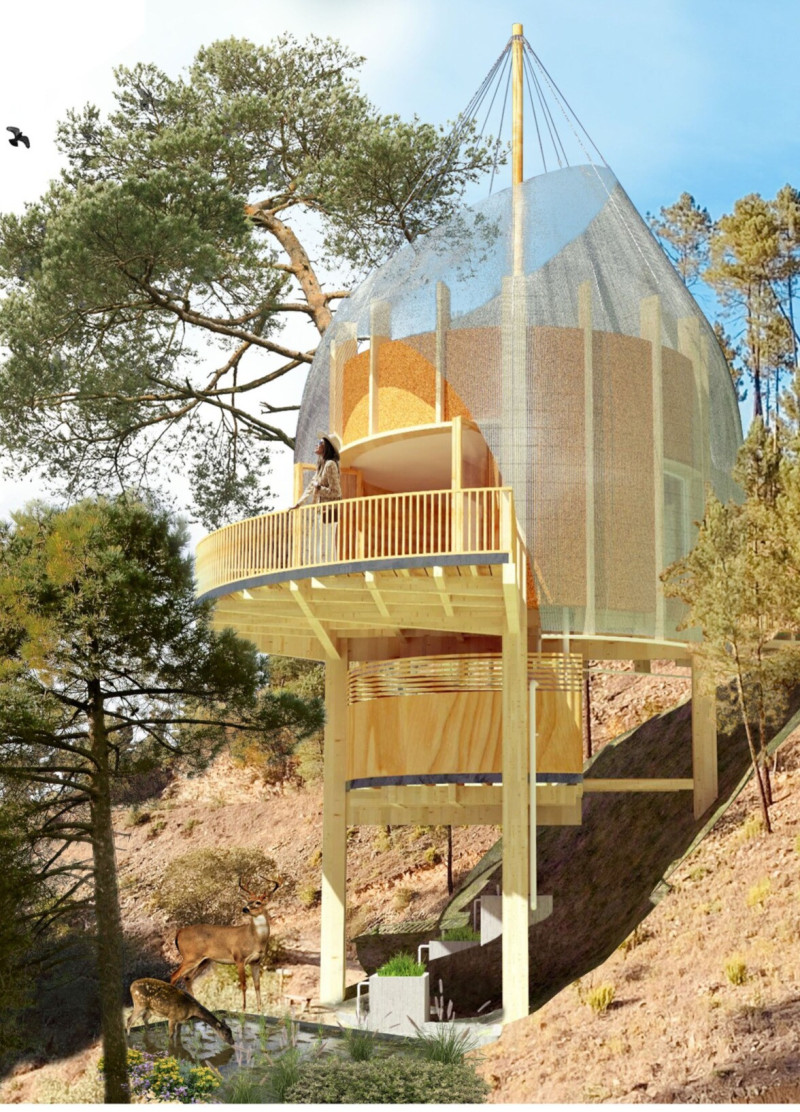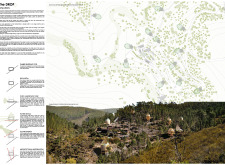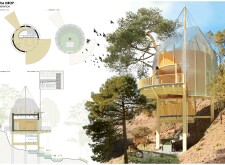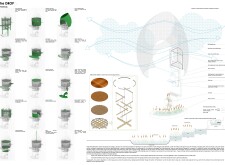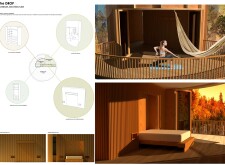5 key facts about this project
At its core, The DROP represents a lifestyle that prioritizes ecological awareness and mindfulness. The design serves multiple functions, acting not only as a living space but also as a medium for inspiring sustainable practices. It encourages residents to engage with their surroundings, promoting a sense of belonging and stewardship for the environment. The architecture is composed of various elements that work together to create a cohesive experience, focusing on integration rather than separation from nature.
One of the key aspects of The DROP is its use of timber sleeping pods. These units are designed to provide comfort while maintaining minimal environmental impact. The choice of wood as a primary material imparts warmth and aligns with the project's ethos of sustainability. Additionally, the design incorporates flexible living spaces that adapt to the needs of the occupants. The layout encourages interaction with the outdoors, with ample natural light flooding through strategically placed windows and openings.
The architectural details of The DROP are particularly noteworthy. Elevation plays a significant role in the overall design, with the sleeping pods elevated on stilts. This design choice not only preserves the natural topography and vegetation but also enhances the views and allows for natural ventilation. The presence of outdoor terraces further blurs the line between indoor and outdoor living. These terraces serve as extensions of the interior spaces, inviting residents to experience their environment intimately.
Unique design approaches are evident throughout the project. For example, the implementation of rainwater harvesting systems demonstrates a commitment to resource conservation. By capturing rainwater for domestic use, The DROP promotes self-sufficiency and reduces reliance on external water sources. Coupled with advanced filtration methods, this system reflects a forward-thinking attitude towards sustainable living.
The incorporation of solar energy solutions further underscores the project’s innovative design strategy. By harnessing solar power, the structure aims for energy independence, aligning with contemporary architectural goals of reducing carbon footprints. Additionally, fog harvesting systems may be integrated, capturing moisture from the atmosphere to support water resources. This reflects a creative approach to environmental challenges, highlighting the possibility of integrating nature’s elements into the fabric of architectural design.
The use of materials extends beyond functionality to enhance aesthetic appeal and durability. The combination of wood, steel mesh, and glass showcases a balance between solid structure and transparency, allowing for visual connectivity to the outdoors. This thoughtful materiality supports the overarching goal of creating a space that is not only pleasing to the eye but also practical and sustainable.
In examining The DROP, it becomes clear that the project stands as a compelling model of modern architecture, where design is deeply intertwined with ecological thinking and human experience. The spaces created within this project invite exploration and connection, not only among its inhabitants but also with the natural world. For those interested in understanding the nuances of The DROP, an exploration of architectural plans, sections, and design details will provide valuable insights into its thoughtful integration of sustainable practices and innovative design ideas. This project invites further investigation and appreciation for the opportunities that modern architecture can offer in shaping our relationship with the environment.


